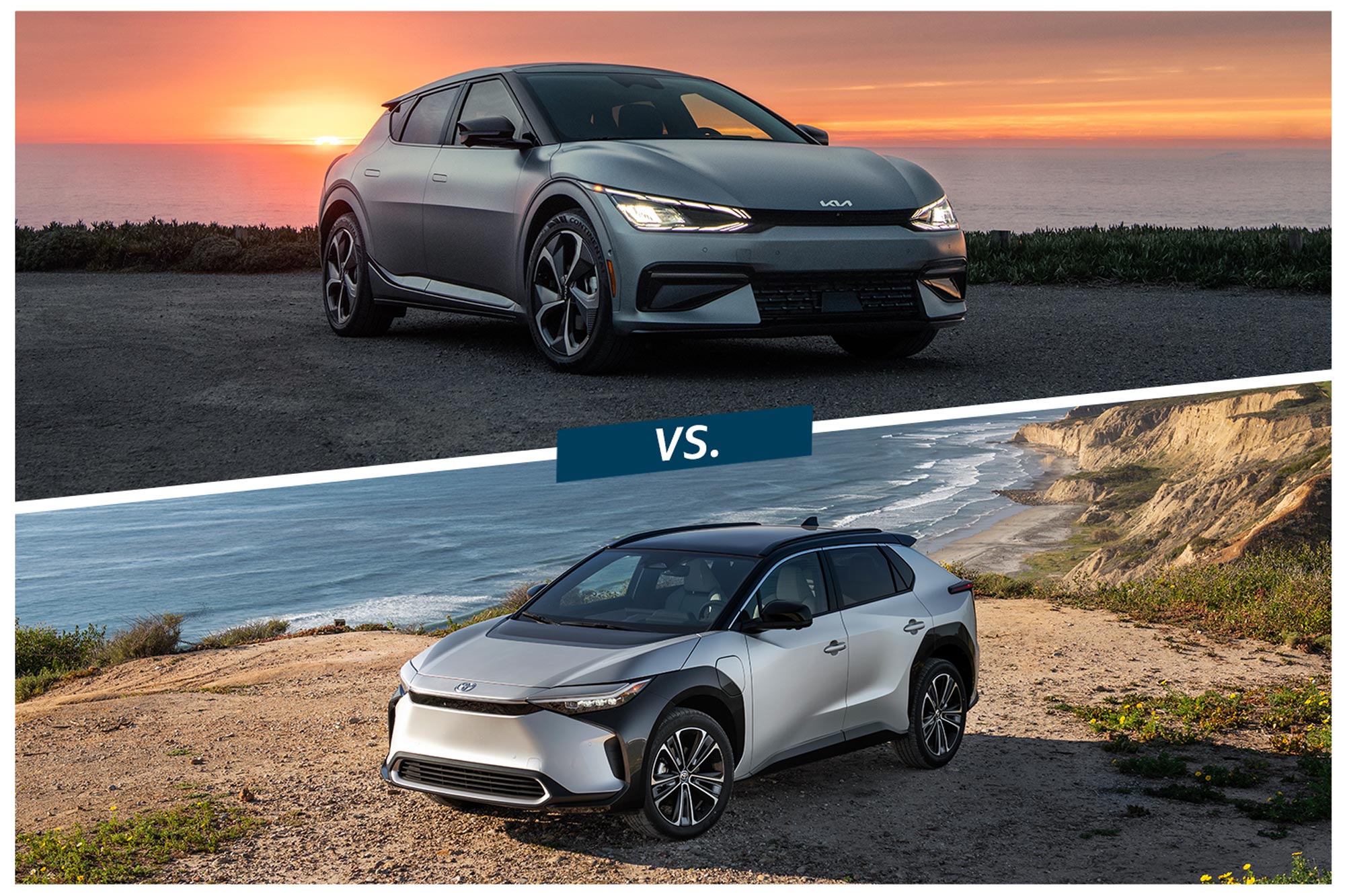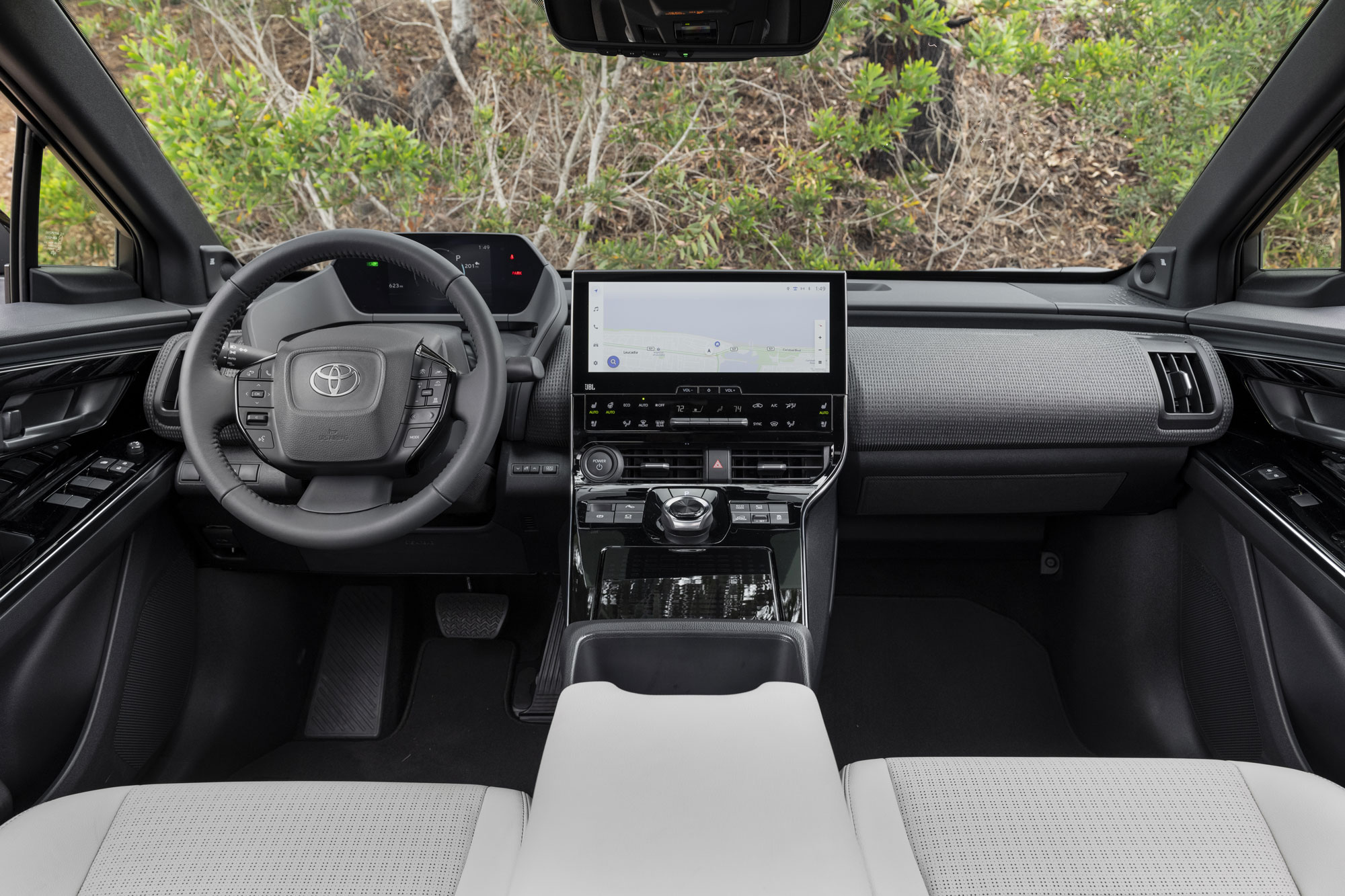Compared: 2023 Kia EV6 vs. 2023 Toyota bZ4X
The electric compact-crossover market is heating up with these stylish and tech-savvy EVs.
 Kia | Toyota
Kia | Toyota
QuickTakes:
While Kia aims to be a leader in electric performance with the EV6 compact crossover, Toyota sticks with what it knows, offering a value play. Toyota's competitively priced — though cryptically named — bZ4X is well equipped and well suited for EV newbies, though the styling — particularly the black bits dripping off the head- and taillights — may be too avant-garde for some.
 Toyota
Toyota
The Toyota bZ4X Offers Better Value
If you're a budget shopper, the decision may be fairly easy: The base bZ4X has a larger battery (71.4 kilowatt-hours versus 58), a longer range (252 miles versus 232), more horsepower (201 to 167), and a lower price (about $44,000 versus about $45,000) than the entry-level EV6. Opting for all-wheel drive (AWD) comes with a $2,000 premium, a 13-hp increase, and a 1.4-kWh bump in battery capacity.
Anyone interested in performance, however, will likely appreciate the Kia's lineup more, as the one-up-from-base rear-drive Wind model — opening at around $50,000 — uses a 77.4-kWh battery, provides more than 300 miles of range, and puts out 225 horsepower.
Choosing the AWD Wind trim ups the power rating to 320 horsepower, but it'll cost you about 30 miles of range and $4,000 extra. What's more, Kia offers a true performance variant of the EV6 in the 576-hp GT. Given its $63,000 starting price and limited range, it's more of a specialist vehicle.
 Kia
Kia
The Kia EV6 and Toyota bZ4X Go Head to Head in Features
Determining which EV has the better interior is a matter of preference. Kia situates its 12.3-inch digital instrument panel and 12.3-inch infotainment screen behind one piece of glass, while Toyota sets its 7.0-inch driver display far back on the dash, away from the 12.3-inch screen in the center stack.
Both have a console pass-through between the front seats and all the requisite tech, including blind-spot monitoring, forward-collision mitigation, adaptive cruise control, rain-sensing wipers, proximity-key entry and push-button start, dual-zone automatic climate control, smartphone charging pads, and Wi-Fi hot spots.
Kia wins a point for providing heated front seats across the board, but then Toyota ties things up with wireless Apple CarPlay and Android Auto connectivity — EV6 owners need to use a cable. Ventilated front seats, 360-degree cameras, and heated rear seats are available in both lineups, but only the EV6 offers a head-up display.
Moreover, the EV6 is the more spacious of the two, particularly for back-seat passengers. Its cargo hold is a bit smaller, though, accommodating 24 cubic-feet of stuff to the bZ4X's 28 (or 26, for those who option the JBL premium sound system).
 Toyota
Toyota
The bZ4X Makes Up in Fuel Economy What It Lacks in Range
The most efficient EV6s are the rear-drivers with 19-inch wheels and the big battery (the Wind and GT-Line). They see 117 MPGe in combined driving and 310 miles of range. The base EV6 — also rear-wheel drive on 19s but sporting a smaller battery — boasts the same fuel-economy rating but can go only 232 miles between charging sessions.
AWD requires additional equipment, making the vehicle heavier and therefore less efficient. Even so, you can still get 109 MPGe and 282 miles of range with the EV6 Wind e-AWD. The GT-Line e-AWD does a little worse (96 MPGe, 252 miles) due to its 20-inch wheels, but it's noticeably more efficient than the dual-motor, high-power EV6 GT, which sees 79 MPGe and 206 miles of range.
With an EPA combined rating of 119 MPGe, Toyota's front-drive bZ4X bests every EV6 in fuel economy, but its 252-mile range estimate is somewhat middling. Choosing the Limited trim (with its 20-inch wheels) or AWD will cost you several points in both measures, with the least efficient model — the AWD Limited — returning 102 MPGe and 222 miles of range.
All vehicle pricing includes MSRP plus destination charges (set at the time of publication), and will be rounded to the nearest thousand.



